A Tour of Iraq’s Ancient Sites
Part 1
STEPHEN LEE MYERS, STEPHEN FARRELL and SHIHO FUKADA
Source - http://atwar.blogs.nytimes.com/2011/01/02/a-tour-of-iraqs-ancient-sites/?partner=rss&emc=rss
The war has long put Iraq’s ancient historic and religious sites off limits to all but the most daring of scholars, archeologists, tourists and ordinary Iraqis. Slowly, if unevenly, that may be changing.
A conservation project at the ancient ruins of Babylon — funded by the United States and overseen by the World Monuments Fund — is merely the most ambitious of numerous projects to begin restoration of sites across the country that have increasingly become accessible with improved security in recent years.
In a place still recovering from years of conflict, the projects promise to open Iraq’s rich, deeply layered history to study and to tourism — not just for foreigners but also for Iraqis, whose engagement with the ancient past has been obliterated by the more recent past.
Aqar Quf
“We could not even come to visit before out of fear,” said Israa Fayadth, who joined her family the other day at the grounds of an ancient ziggurat called Aqar Quf, a ruin of the Kassite dynasty that replaced the first Babylonian empire of Hammurabi some 3,500 years ago.
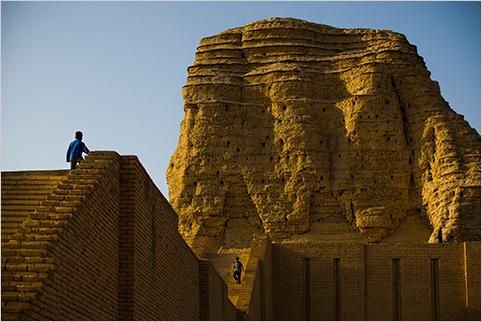
Shiho Fukada for The New York Times
Aqar Quf, only a short drive from Baghdad, is located near Abu Ghraib, a place made notorious by the American prison there and a simmering insurgency that abated only recently. (A guard house at the entrance is pocked with bullet holes.)
It was once – and may again be – a regular stop on the tourist trail, the Iraqi equivalent of an American state park, only with remnants of one of the world’s early civilizations as a backdrop.
For anyone whose interests include ancient history, as mine now do, being in Iraq is like a daily immersion in a history course on Mesopotamia (which, coincidentally, my daughter Maddie is now studying in the 7th grade back home).
As you drive today along highways punctuated by checkpoints, barbed wire and blast walls, through the bleak, sun-baked deserts or the lush palm groves of the “land between two rivers,” ancient names emerge from the landscape like chapters in the course’s textbook: Ur, Babylon, Hatra,Nimrud, Nineveh.
Chapters of the Bible itself are attributed to prophets believed to have been entombed here – including Ezekiel in Kifl, the site of which can be seen in this video filmed during a visit by The New York Times in October:
Farther north are the prophets Ezra in Azair, Daniel in Kirkuk and Jonah in what is today Mosul, still one of Iraq’s most dangerous places.
Most are revered in Islam, too. Their tombs are reasonably well maintained and lively places of worship, pilgrimage and tourism, even if still subject to disputes over their preservation and provenance.
On the other hand, the tomb of Nahum, located in Qosh in northern Iraq, fell into disrepair after the last of Iraq’s Jews left in the 1950’s, and is in dire need of preservation.
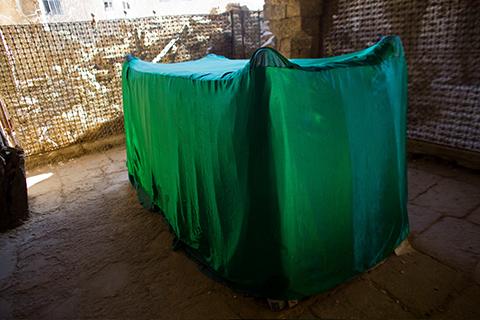
Shiho Fukada for The New York Times - A site reputed by tradition to be the tomb of the Prophet Nahum, in Qosh, northern Iraq.
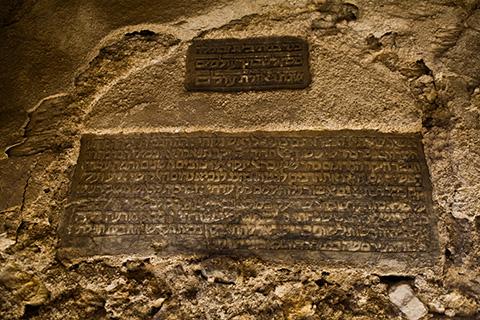
Shiho Fukada for The New York Times - Hebrew inscriptions at the reputed burial site of Nahum in Qosh, northern Iraq.
Kirkuk
Daniel’s blue-tiled, double-domed shrine sits atop an ancient citadel in Kirkuk, dating to the Sumerian period nearly five millennia ago, even before Daniel saw the writing on the wall.
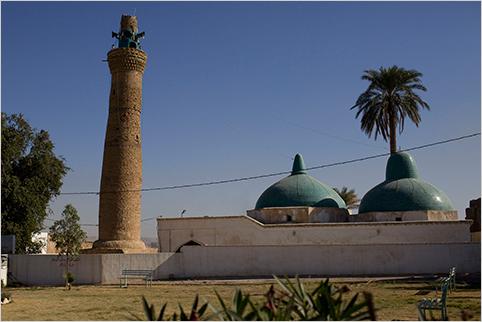
Shiho Fukada for The New York Times - One of the sites claimed by tradition to be the burial place of the Old Testament Prophet Daniel.
The citadel looms over Kirkuk, a city deeply divided by Arabs, Turkmen, Kurds and Christians, though fewer and fewer-
Believers seeking answers to their prayers – marriage, pregnancy, a cure for illness – tie strips of cloth to the iron grate that surround Daniel’s tomb or toss money or trinkets inside.
The busiest day, even now, is Saturday, a lingering echo of the Jews who used to visit on the Sabbath, the tomb’s Muslim caretaker, told me. Iraq’s central place in the history of all three faiths – Judaism, Christianity and Islam – is palpable at more than one site around the country.
Saddam Hussein’s regime, which was never kind to antiquities, cleared Kirkuk’s citadel of most of its inhabitants in the 1980’s and destroyed their homes as part of a reclamation project.
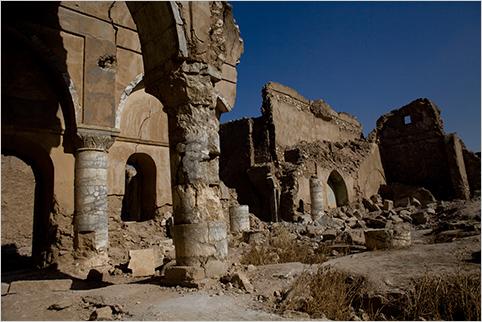
Shiho Fukada for The New York Times - A ruined Chaldean church, on Kirkuk’s Citadel
Local officials managed to save some of them, mostly from the Ottoman era, as well as a 19th century Chaldean Catholic church, though it too has crumbled to ruins. From the city below echoes the cacophonic hammering of a copper market.
Now the local governor and officials from the State Board of Antiquities and Heritage plan to restore the place.
Work has begun on a few homes, as well as an ancient bazaar, though sufficient funds are lacking. Kirkuk may be a potential flashpoint in Iraq’s unfinished transition from dictatorship and war, but it is possible to at least envision a better future. Outside the citadel’s mosque, once an ancient Christian church, two soldiers improbably whipped cotton candy from a crude machine and offered it to visitors.
“People from all the world,” the local antiquities director, Ayad Tariq Hussein, said, “they have to see this place.”
Erbil
In the relative security of Iraq’s semi-autonomous Kurdish region farther north, a more advanced, more ambitious project is under way.
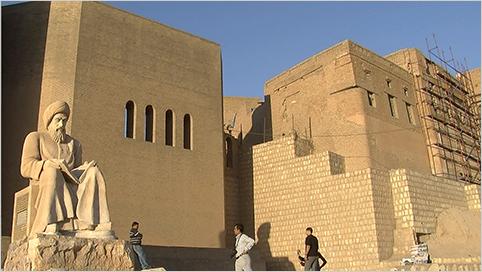
Stephen Farrell/The New York Times - The Citadel overlooking the Kurdish capital, Erbil
This is at Erbil’s citadel, with the support of the United Nations cultural organization UNESCO and restoration experts from Italy, France, the Czech Republic and other countries.
“This heritage is new to us,” said Pewist Lajlani, an engineer working to shore up the first 4 of 10 Ottoman-era houses, perched on the citadel’s precipice, “so we do it step by step.”
All of Iraq’s ancient sites have suffered from time and weather, from dictatorial abuse, neglect and war. The existential threats facing them persist today. Looting remains a scourge, pillaging ancient sites before archeologists even have a chance to find and record the treasures buried within them.

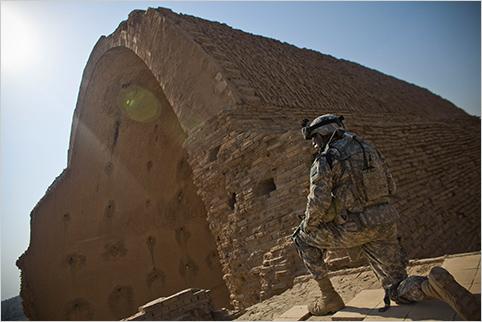
suite Part-2